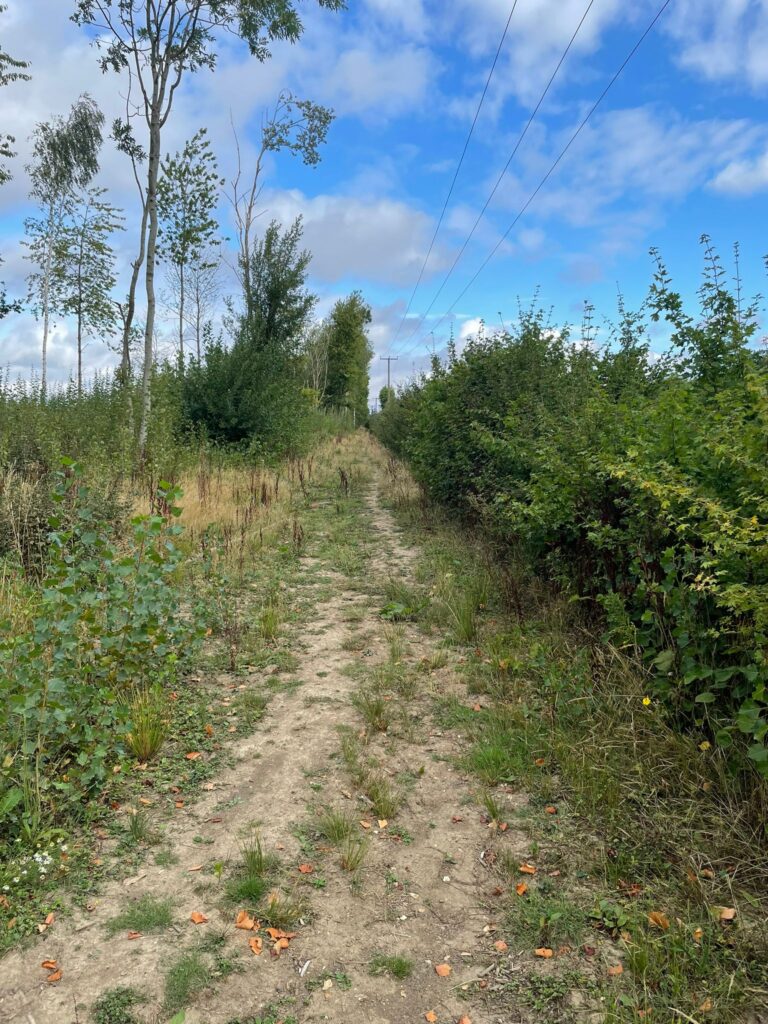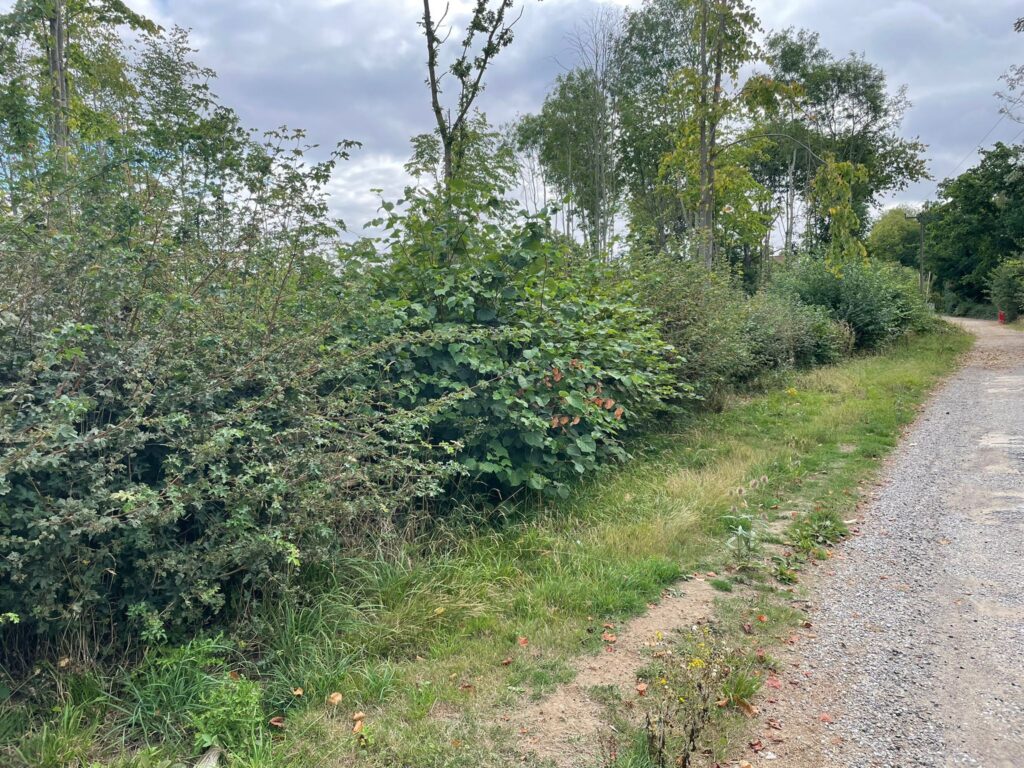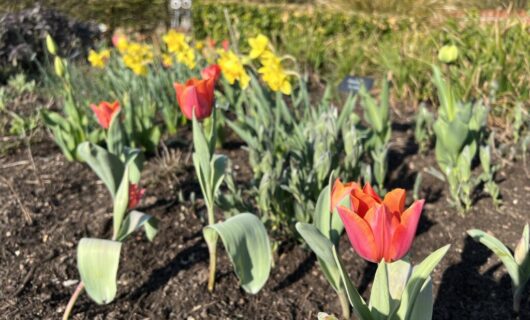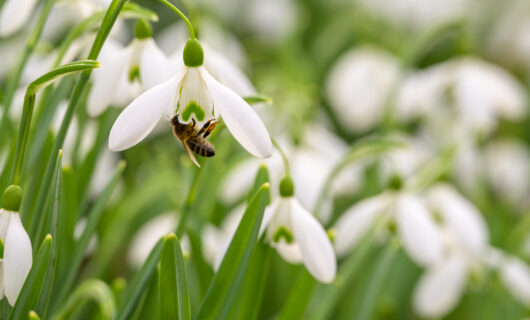Emma’s Guide to Hedgerows
Saturday 17th September is the first day of National Hedgerow Week. Our Horticulturalist Emma share with us facts about hedgerows and why they’re so important. As well as highlighting some of the hedgerows which can be found across the estate and the amazing work the team do in maintaining them. So, over to Emma…
Why are hedgerows important?
Hedgerows form the UK’s largest wildlife habitat; they improve biodiversity, provide shelter and corridors for wildlife to move safely between habitats, and reduce the impact of climate change (such as reducing soil erosion, provision of carbon sinks, reducing the impact of flood water etc). They are also an important landscape and historical feature of the UK countryside.

Interesting hedgerow facts:
• Hedgerows are home to 80% of the UK’s woodland birds (Source: National Hedgerow Week 2022),
• Well-managed hedgerows in the UK are home to over 2,000 species of wildlife, including hedgehogs, dormice, bats and the Great Crested Newt (Source: National Hedgerow Week 2022),
• The UK has lost 50% of its hedgerows since WWII (Source: National Hedgerow Week 2022).
Hence why hedgerows need our protection!
What makes a good hedge?
• The best hedges are made up of several species, which come into leaf, flower, and fruit at different times of the year. Small native species such hawthorn, blackthorn, dog rose, holly, rowan, and crab apple provide flowers, berries and fruit crops for many wildlife species; larger species such as oak, ash and beech attract insects, a food source for birds and bats.
• A sub-layer of flowers and grasses beneath the hedge provides nectar and pollen for bees and other invertebrates; and protection for insects, hedgehogs, toads, newts, and lizards to feed and hibernate over winter.
• The denser the hedge, the better the protection for small birds, such as thrushes, finches, robins, and wrens.
• Ideally, leave hedge-cutting until after late winter berries are available. Never cut during bird breeding season (1 March – 31 August – unless you must for safety reasons) (Source: National Hedgerow Week 2022).
Important note:
Hedgerows require ongoing care and maintenance. The site and plants should be chosen carefully; some plants are fast growing and difficult to maintain. Left unmanaged, hedgerows will become a line of trees!
Lots of useful information about planting and managing hedgerows can be found on the websites below.

Hedges at Markshall Estate
Hedgerows have been recorded on the Estate for over 100 years. We have a number of species-rich and nationally important hedges.
Definitions
• Species-rich: a hedgerow which contain five or more native woody species in a 30m length;
• Nationally important: a hedgerow is at least 30 years old and meets at least one of the criteria found on this UK Gov website: https://www.gov.uk/guidance/countryside-hedgerows-regulation-and-management#:~:text=a%20private%20garden.-,’Importance’,such%20as%20a%20scheduled%20monument.
Although some of our hedges are under 5-years old and have less than 5-species, they still provide ecological and environmental benefits, which will improve as the hedges mature. The hedgerows across our Estate provide different functions, such as boundaries for woodland or arable land, and therefore, are managed differently.

How we manage our estate hedgerows:
Coppicing: this traditional method of management involves young tree stems repeatedly cut down to near ground level. This technique is used to rejuvenate hedges and extend their lifespan by encouraging new, healthy stems to grow from the cut stumps (stools).
Hedge laying: this ancient countryside skill is the art of cutting hedgerow stems partly through near ground level so that they bend without breaking and will continue to grow. New growth comes from the cut stump rejuvenating the hedge.
Dead hedging: dead hedges are piles of brash (the foliage, branches and crown of the tree) arranged to form a barrier. Although, technically, ‘not living’, they form important habitat for insects and beetles, as well as a rich feeding ground for hedgehogs and other small mammals.
Tree species
The most found species in our hedgerows include common hawthorn, elder, field maple, dogwood, hazel, dog rose, ash, blackthorn, small-leafed lime, and English oak.
Emma
Horticulturalist
Hopefully this blog post has inspired you to pay a closer look on the hedgerows you see in your local greenspaces, on your daily walk or even in your own garden. If you have any questions for Emma, please get in touch. Emma has also left some useful links below.
Useful links
Official website: https://hedgelink.org.uk/campaign/national-hedgerow-week/
Useful websites: https://treecouncil.org.uk/seasonal-campaigns/national-hedgerow-week/
https://www.wildlifetrusts.org/habitats/farmland/hedgerow
https://www.woodlandtrust.org.uk/trees-woods-and-wildlife/habitats/hedgerows/
More from the blog
See more
-

Updates from the Walled Garden in Spring
What can be discovered in the Walled Garden at Markshall this Spring? Our Walled Garden is home to a stunning […]
-

Commemorating the 80th Anniversary of Operation Varsity
What was Operation Varsity? Operation Varsity was the codename for the largest single airborne operation conducted on a single day […]
-

Your guide to enjoying the snowdrop display at Markshall
February is the best time to visit Markshall’s spectacular snowdrop display. To ensure that you make the most of your […]